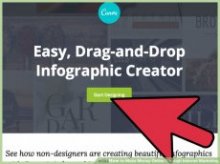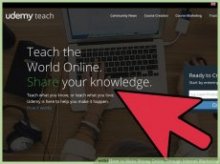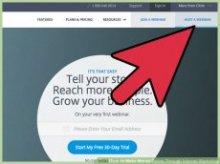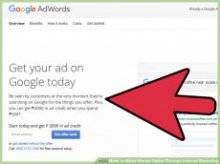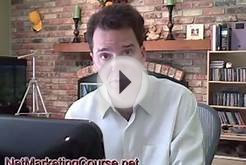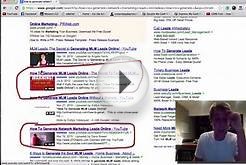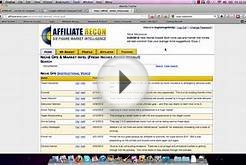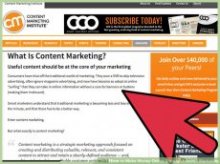 Learn the definition of content marketing. Content marketing is a strategy for selling your goods or services. It involves setting yourself up as an expert in your field by creating and sharing content that is closely related to what you are selling. The content can include blog posts, videos, online courses or e-books. The goal is to attract and retain a clearly-defined audience who will purchase your goods or services. If you have a business, consider starting a blog as part of your marketing plan. You can write how-to articles, product reviews, answers to questions and posts about upcoming events. Blogs give you more flexibility than other forms of social media like Facebook or Twitter because you own the content and aren’t bound by a third party’s rules or restrictions. Also, if your posts include keywords or phrases and link to internal and external content, you can improve the search optimization of your website. Blogs drive sales because you can include product information and links to product pages. According to Cisco, video accounted for 64 percent of consumer internet traffic in 2014, and it is expected to grow to 80 percent by 2019. Video is so popular because it's engaging and allows people to get information and entertainment that’s easy to digest. With so much information available at their fingertips, most people want to get their content quickly and move on. Produce creative videos that educate your customers about your products. Keep the videos relevant to your audience. Also, promote your videos across several social media channels. Price Waterhouse Cooper predicts that revenue from e-book sales in the United States will grow from $2.31 billion in 2011 to $8.69 billion in 2018. That’s an increase of 276 percent. Since the popularity of e-books is increasing so significantly, consider using this type of media to connect with your customers. Content marketers create self-published titles on platforms like Amazon Kindle Direct Publishing and make them available for free. E-books can help you generate sales leads, educate customers about you and your products, build your brand and offer valuable information to your target audience. Infographics are visual displays of information. They display your content using visual design elements. They can illustrate a point from an article, but they also usually convey a self-contained message. Infographics are effective because they can quickly communicate complex information in a visually-pleasing, easily-understood way.
Learn the definition of content marketing. Content marketing is a strategy for selling your goods or services. It involves setting yourself up as an expert in your field by creating and sharing content that is closely related to what you are selling. The content can include blog posts, videos, online courses or e-books. The goal is to attract and retain a clearly-defined audience who will purchase your goods or services. If you have a business, consider starting a blog as part of your marketing plan. You can write how-to articles, product reviews, answers to questions and posts about upcoming events. Blogs give you more flexibility than other forms of social media like Facebook or Twitter because you own the content and aren’t bound by a third party’s rules or restrictions. Also, if your posts include keywords or phrases and link to internal and external content, you can improve the search optimization of your website. Blogs drive sales because you can include product information and links to product pages. According to Cisco, video accounted for 64 percent of consumer internet traffic in 2014, and it is expected to grow to 80 percent by 2019. Video is so popular because it's engaging and allows people to get information and entertainment that’s easy to digest. With so much information available at their fingertips, most people want to get their content quickly and move on. Produce creative videos that educate your customers about your products. Keep the videos relevant to your audience. Also, promote your videos across several social media channels. Price Waterhouse Cooper predicts that revenue from e-book sales in the United States will grow from $2.31 billion in 2011 to $8.69 billion in 2018. That’s an increase of 276 percent. Since the popularity of e-books is increasing so significantly, consider using this type of media to connect with your customers. Content marketers create self-published titles on platforms like Amazon Kindle Direct Publishing and make them available for free. E-books can help you generate sales leads, educate customers about you and your products, build your brand and offer valuable information to your target audience. Infographics are visual displays of information. They display your content using visual design elements. They can illustrate a point from an article, but they also usually convey a self-contained message. Infographics are effective because they can quickly communicate complex information in a visually-pleasing, easily-understood way.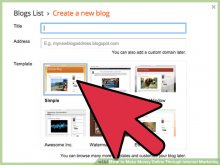 Use infographics to present survey data, explain how your product or service works or to compare products or services. Teach an online course. Teach a class in your specialty. You can teach the class in person, or you can offer it online. Options for offering your class online include sending it through e-mail, hosting it on your website, or publishing it on an online platform like Udemy.
Use infographics to present survey data, explain how your product or service works or to compare products or services. Teach an online course. Teach a class in your specialty. You can teach the class in person, or you can offer it online. Options for offering your class online include sending it through e-mail, hosting it on your website, or publishing it on an online platform like Udemy.
- Teaching an online course is practical and profitable because you teach it once, and then you use it over and over again to connect to your customers.
- Create a useful course that addresses your customers’ needs and develop an ongoing system to promote the video and attract new customers.
Method 2
Building an Online Presence- Understand the basics of building an online presence. If you own a business, you need a website. It doesn't need to be fancy, but it does need to present essential information to potential customers. Things like your business' contact information, product descriptions, an online store, etc.
- Use search engine optimization (SEO) to ensure your website isn't buried on the last page of a search engine. To do this, you'll need to provide interesting, unique content on your website, use keywords, and get other websites to link back to yours.
- Learn the definition of paid channel advertising. This is also sometimes referred to as Search Engine Marketing (SEM) or pay-per-click (PPC) marketing. All of these terms can be used interchangeably, and they refer to purchasing or renting traffic through online advertisements. Although it can be expensive, this strategy is effective because it is measurable and can be used to target specific niches in your target market.
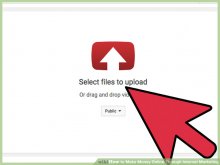 But you have to be savvy and develop a successful strategy.
But you have to be savvy and develop a successful strategy.
- LinkedIn, Google, Facebook and Twitter all offer paid channel advertising.
- Understand the different sales models. The most common forms of paid channel advertising are cost-per-mille (CPM) and cost-per-click (CPC). CPM ads are the banners you see across the tops of webpages. You are billed a flat rate based on the number of times the ad is displayed. CPC ads are the paid advertising results you see on a Google search results page or in the side margin on a Facebook page. You pay for every click on your ad.
- CPM is a cost per 1000 views and that it means that the ad is exposed, but not necessarily read or noticed. CPC is much more expensive since the reader has taken the time to "click through" to the website.
- Develop an advertising strategy. Use strategies that let you get the most from your ads. You want to time them properly so they reach your target audience at the right time. Also, you must use strategies that target the location, behavior or browsing habits of your target audience.
- Day parting allows you to manage how often and when your ads are displayed throughout the day.
- Re-targeting is cookie-based technology. When new visitors come to your site, a cookie is dropped on them. As they browse the web, the cookie displays your ad. Keep in mind unsolicited cookies can have negative repercussions for the vendor.
- Geotargeting markets to customers in a specific geographic location.
- Internet-based targeting finds your customers based on their browsing activity.
- Behavioral targeting finds customers based on their purchasing history.
- Choose an ad network. Use information about your target audience to evaluate the different networks and choose the right one for your ads. What works for another business might not work for you. Think about how you want to target your audience and the visual appeal of the ads.
- Decide if you want to target a business-to-business (B2B) or consumer audience. Also, choose to target your customers based on either demographics or their interests.
- Consider the user experience of your ad.
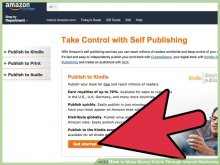 Depending on the network you choose, customers can see you ad based on keywords they search, products for which they shop or by their interests or job title.
Depending on the network you choose, customers can see you ad based on keywords they search, products for which they shop or by their interests or job title. - Choose an ad format that is visually appealing, aligns with your brand and communicates about your business in a clear way.
Method 3
Connecting to Customers with Email Marketing- Learn the definition of email marketing. Email marketing is sending a message about your business to a group of people via email. It gives you a way to promote your business and stay connected with your customers. You can send advertisements, requests for business or solicitations for sales or donations. It is an inexpensive and efficient way to reach a large audience. You can also segment your e-mail list to send different kinds of emails to different customers.
- Use automation. Use automation technology to send thousands of emails to customers on your marketing list. Software can segment your list and send targeted, timed emails to your customers. It makes your customers feel like you are reaching out to them personally. Email automation software companies include MailChimp, InfusionSoft, Marketo, HubSpot and Eloqua.
- Comply with laws regulating SPAM. Familiarize yourself with the Federal Trade Commission’s (FTC’s) CAN-SPAM Act. This act specifies requirements for commercial emails, gives customers the option to opt out of receiving emails from you and imposes tough penalties for violations. It applies to all commercial email, including bulk email, individual commercial messages, business-to-business (B2B) commercial messages and emails sent to consumers.
- The person or business originating the message must be clearly identifiable.
- The subject line must not be deceptive.
- You must disclose that your message is an ad.
- Your message must include a valid physical address that tells customers where you are located.
- You must offer an opt-out mechanism that works within 10 business days.
- Even if you hire another company to manage your email marketing, you are responsible for complying with the law.
- Measure engagement and conversions. Calculate the number of times your emails are opened by customers. Also, measure how many visits to your site are generated by each email campaign. Evaluate how often an opened email converts into a sale. Determine the total revenue earned by each email campaign. Use this information to design future email campaigns.
